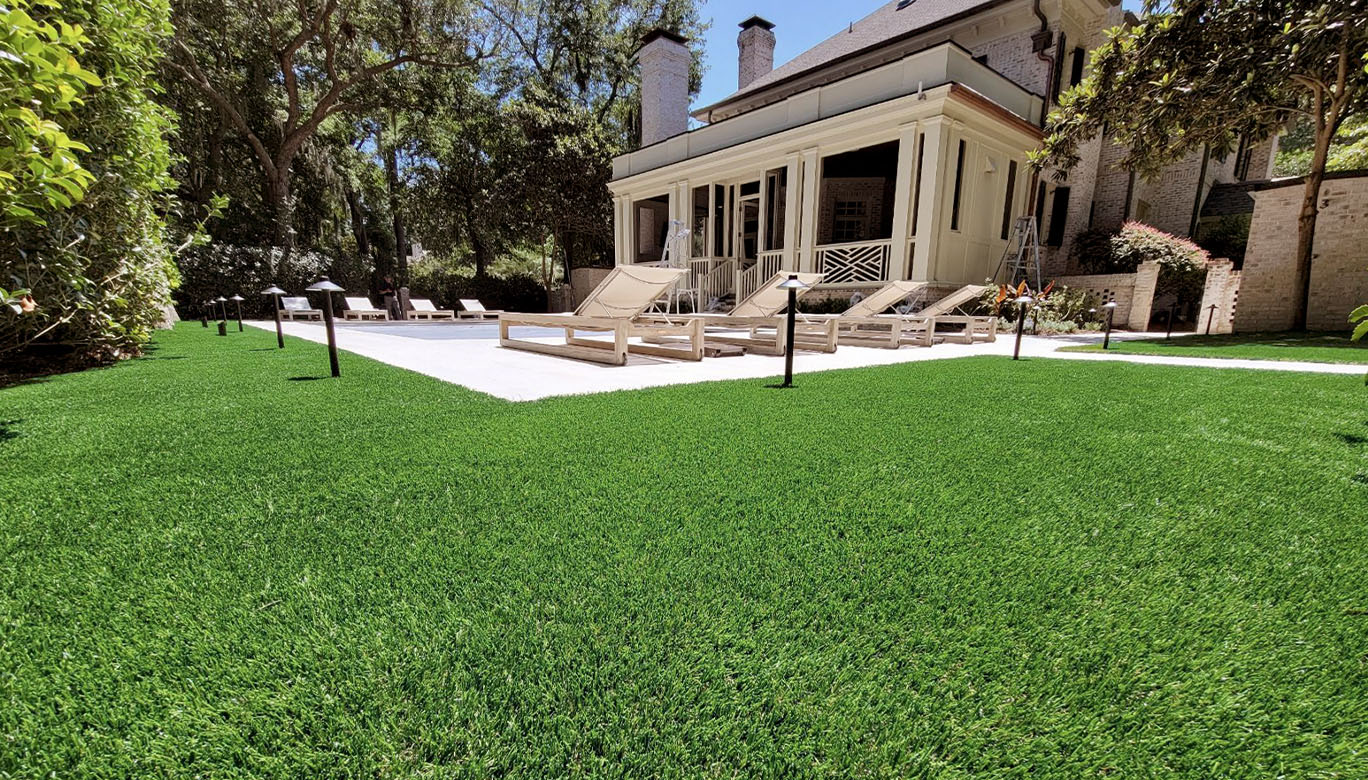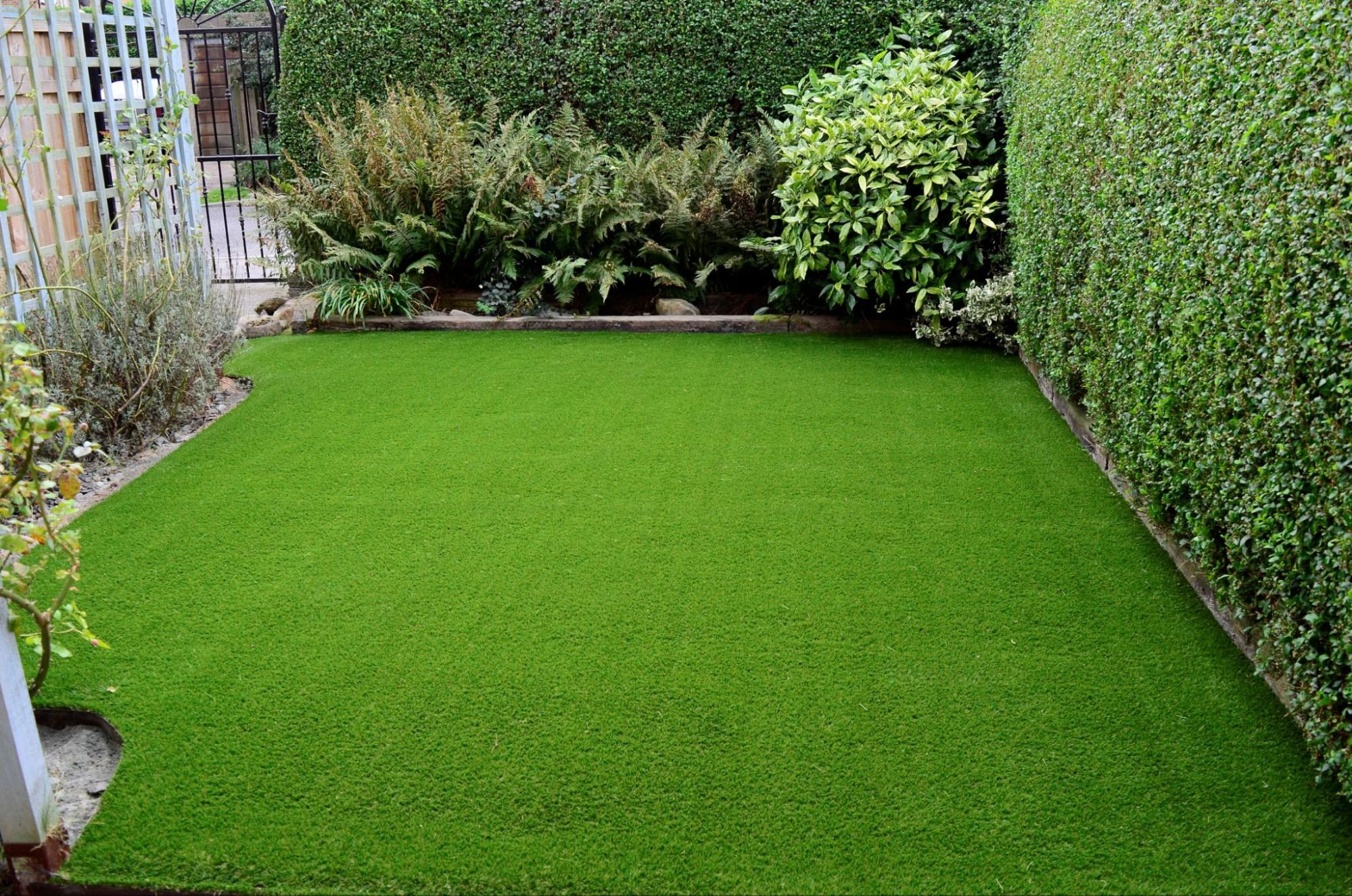Top-Grade Arizona Turf Options for a Stunning and Green Landscape
Top-Grade Arizona Turf Options for a Stunning and Green Landscape
Blog Article
Explore the Environmental Benefits of Opting for Artificial Grass Solutions
The adoption of artificial grass solutions provides an engaging opportunity to deal with pushing environmental difficulties. By dramatically reducing water usage and decreasing the application of dangerous chemicals, these choices not just promote sustainable landscaping but likewise shield regional communities.
Water Preservation Perks
Among one of the most significant advantages of man-made lawn is its capacity to save water. Traditional yard lawns require considerable watering, especially in locations susceptible to dry spell or water constraints. In comparison, synthetic grass does not require watering, substantially minimizing the general demand for water resources. This feature is especially advantageous in arid areas where water deficiency is a pressing problem.
By removing the requirement for regular watering, synthetic grass contributes to sustainable landscape techniques and helps alleviate the environmental influence of excessive water usage. The preservation of water prolongs to the decrease of overflow, which can lead to dirt erosion and waterway air pollution.
Additionally, the installment of man-made grass allows municipalities and home owners to assign water resources more successfully, concentrating on vital usages such as drinking water and agriculture. The shift towards synthetic grass not just promotes liable water usage but also lines up with more comprehensive ecological goals aimed at protecting natural sources.
As neighborhoods increasingly prioritize sustainability, the water conservation advantages of synthetic grass present a compelling situation for its fostering in residential and commercial landscape design tasks.
Decreased Chemical Usage
The shift to synthetic lawn substantially reduces the dependence on chemical treatments generally made use of in all-natural lawn upkeep. Standard grass administration typically entails the application of herbicides, chemicals, and plant foods to advertise growth and control insects. These chemicals can position dangers to human health and wellness, regional wild animals, and the environment, adding to soil and water contamination.
In contrast, man-made lawn eliminates the need for these dangerous substances. As soon as set up, it requires marginal maintenance, mostly including regular cleansing and seldom infill replenishment. This reduction in chemical usage not just benefits the immediate setting however also adds to more comprehensive eco-friendly stability. By minimizing the release of artificial compounds into the community, synthetic grass promotes much healthier dirt and water systems.
In addition, the lack of chemical drainage connected with artificial grass installations assists protect regional rivers from pollution, sustaining marine life and maintaining biodiversity. Arizona turf. As communities progressively focus on lasting practices, choosing synthetic grass provides a viable remedy that aligns with environmental preservation goals. With this change, homeowner can take pleasure in lavish environment-friendly spaces without jeopardizing environmental wellness, leading the way for a much more lasting future
Reduced Carbon Footprint

Moreover, the installation of synthetic lawn can cause significant water preservation. All-natural lawns call for substantial quantities of water for watering, which not only contributes to the carbon impact connected with water removal and treatment yet likewise strains neighborhood water sources. On the other hand, artificial grass requires very little maintenance, needing no watering, therefore dramatically minimizing water use and its connected power costs.
Additionally, the long life of man-made turf contributes to its decreased carbon effect. With a lifespan of approximately 15 years or even more, the demand for regular replacements is reduced, resulting in much less waste and lower energy usage in manufacturing and disposing of conventional turf alternatives. Overall, synthetic lawn presents a lasting alternative for ecologically mindful landscaping.
Habitat Conservation
Environment preservation is a vital consideration in the discussion over landscape design options, especially when comparing artificial lawn to look at this now all-natural turf. Natural lawn lawns typically require comprehensive maintenance, consisting of the use of herbicides, plant foods, and pesticides, which can negatively impact local communities. These chemicals can seep right into the soil and rivers, damaging native flora and fauna and interrupting neighborhood habitats.
In contrast, man-made turf presents a chance to lower the eco-friendly impact of landscape design. By opting for synthetic lawn, homeowners can reduce the interruption of all-natural habitats associated with traditional lawn treatment methods. Synthetic grass removes the demand for hazardous chemicals, consequently shielding close-by wild animals and maintaining the integrity of surrounding ecosystems. The setup of fabricated turf can lead to the conversion of previous turf locations right into even more biodiverse landscapes, such as pollinator yards or native plant areas, which can support local wildlife.
Ultimately, the change to synthetic grass not only saves water and decreases upkeep initiatives however likewise fosters a much more harmonious relationship in between human activities and the natural surroundings, advertising environment conservation at the same time.
Long-Term Sustainability
Long-term sustainability is an essential aspect in examining the advantages of Check Out Your URL artificial lawn over traditional turf yards. Among the most significant benefits of synthetic grass is its resilience; it can last up to 15-20 years with very little upkeep, whereas all-natural lawn requires constant reseeding and substitute. This longevity reduces the requirement for consistent sources, such as water, plant foods, and pesticides, which are crucial for preserving a healthy and balanced grass yard.
Additionally, fabricated lawn adds to a decrease in carbon exhausts connected with lawn care devices. Conventional grass commonly call for gas-powered mowers, trimmers, and blowers, all of which contribute to air pollution. Arizona artificial turf. In comparison, synthetic grass removes the need for such tools, advertising a cleaner setting
In addition, the production of synthetic grass increasingly uses recycled materials, improving its sustainability account. As makers embrace eco-friendly techniques, the environmental footprint of fabricated lawn remains to reduce.

Final Thought
The fostering of man-made grass services offers considerable ecological benefits, including significant water preservation, decreased dependence on unsafe chemicals, and a lower carbon impact. Artificial lawn help in preserving all-natural habitats by lessening land disturbance and promoting long-term sustainability with the usage of resilient products. Collectively, these elements emphasize the possibility of synthetic grass to contribute positively to ecological health and use a viable option to typical landscaping techniques in an increasingly resource-conscious world.
In contrast, synthetic lawn does not need watering, dramatically reducing the general need for water resources. By reducing the release of artificial compounds right into the ecosystem, artificial grass promotes much healthier dirt and water systems.
In addition, the installation of synthetic grass can result in considerable water preservation. In comparison, artificial turf needs Check This Out minimal maintenance, requiring no watering, thus substantially minimizing water use and its connected energy expenses.

Report this page